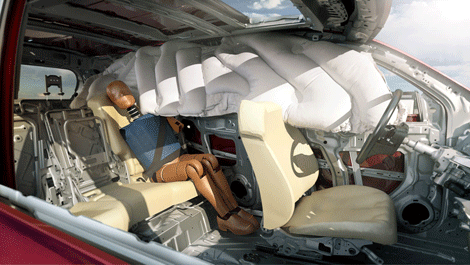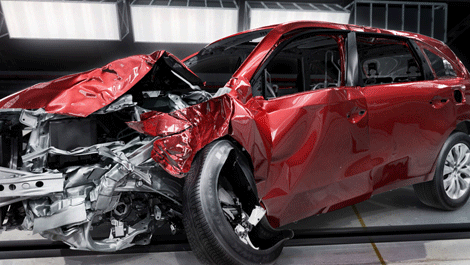
3DXcite and Honda have collaborated to produce more realistic crash test simulation
We were intrigued to see Honda’s latest crash test software, Real Impact, making the pages of the LA Times this week, proposing a new level of realism in automotive testing.
Real Impact is the work of Dassault Systèmes 3DXcite working directly with Honda on its DeltaGen product to develop a software that can simulate a collision making it possible for engineers to isolate single components of the vehicle and view the impact this has.
FEA technology is already employed by automotive companies around the world – we took time to visit Ford’s German crash test site, where CAD FEA model testing measures up with physical tests.

The Real Impact system renders the CAD data as close to photorealistic as it can, including lighting and the surrounding environment
However, Real Impact looks to add in more visualisation technology to simulation, something we saw a lot of from RTT over the past few years before its acquisition and name change to 3DXcite.
Blurring the lines between visualisation and simulation, RTT demonstrated to us a link up with Fluidyna, a specialist in engineering simulation software.
We were presented with a high-quality rendered model of a car with an animated CFD analysis showing the airflow around the wing mirror. While this may sound like nothing special, the difference here was that the simulation and rendering were both being calculated and displayed in real time.
A designer could inspect the 3D model from any angle, zoom into see detail, and take a closer look at how the velocity distribution changes as the car travels at different speeds.
The hardware making this happen was pretty substantial – a workstation with three Tesla GPU cards. Fluidyna stated that with this setup calculations could be completed 60 times faster than when running on a single CPU.
We suspect a similar story with Real Impact, as it is said to allow Honda to perform 600 crash test simulations a month, and as many as 6,000 crash test simulations per vehicle, a huge increase on the 200 physical tests it can currently run each year.
Honda’s previous technology reportedly required about six weeks to make a fully interactive simulation video. Now, those results can be done in a day.
Another equally useful benefit is that the Real Impact system renders the CAD data as close to photorealistic as it can, including lighting and the surrounding environment.
This added realism reportedly makes it easier to analyse individual parts – while also allowing the model to be viewed from multiple angles, broken down to individual parts or segments.
The best news is that Honda is not claiming any specialist rights to the product, which should mean safer roads for all in the near future.
//www.youtube.com/embed/8d4y74kkE_k?rel=0






